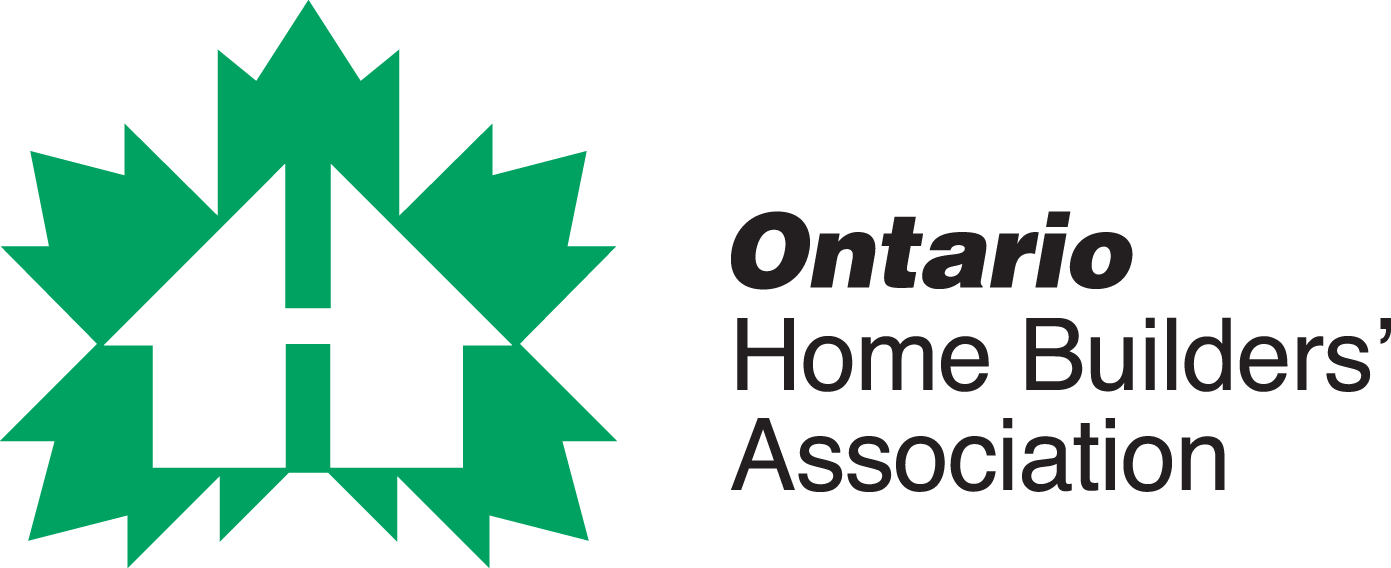By ed McIntyre with Benjamin Tal, Deputy Chief Economist, CIBC Capital Markets
Trump, geopolitics and a housing supply shortage are among the variables in our 2025 economic outlook
U.S. President-Elect Donald Trump is probably bluffing. But what if he’s not? The Ontario economy has enough to worry about without pondering the implications of 25% tariffs on Canadian exports.Fortunately, Benjamin Tal, CIBC’s Deputy Chief Economist of Capital Markets, is here to help illuminate the murky road ahead for our economy and what it means for OHBA members.
OHB: Do you recall a more volatile international environment in your professional lifetime?
BT: “Things often look volatile at any point in time, then it turns out not to be as bad as first anticipated. But we do have a lot of things happening at the same time, including Trump and geopolitical issues, so it’s up there for sure.”
You forecasted the Bank of Canada’s 50-basis-point drop last month. The new interest rate is 3.25%. Where will it be this time next year?
“I think it will be 2.25% to 2.5%, with increments of 25 basis points.”
Is there any concern with homeowners renewing mortgages in 2025 despite those rates dropping?
“People have been calling it a ‘mortgage cliff,’ but from a ‘macro’ perspective, this is much ado about nothing because 40% of those renewing this year will actually see lower interest rates. For the 10-15% of people renewing who will see a big increase, that’s significant for them. It’s a ‘micro’ story that will impact those people, but not a macroeconomic thing that will impact the thinking of the Bank of Canada.”
Looking at the big picture, do you think incoming President Trump’s threat of 25% tariffs is just posturing?
“Yes, mostly. If you go back to May 2019, Trump tweeted that he was going to impose a 5% tariff on Mexico until they did something about the border. A week later, he tweeted that Mexico was doing everything needed to secure the borders and therefore the tariffs were not needed. I think he’s just using the 25% tariff threat as a negotiating tool. It will not be imposed across the board. But I do think there could still be tariffs in that 25% range targeting specific sectors like steel, forestry and dairy. But not the energy sector—60% of our exports are energy-related, and that would really hurt the U.S. consumer. I think Trump will be harder on China and Mexico.
“But it’s important to note that the last time he introduced tariffs on China, Chinese exports to the U.S. went down dramatically, but exports from other countries to the U.S., like Malaysia, South Korea, Vietnam, India and Mexico went up dramatically. So China is not stupid. They looked at how they could get to the U.S. by using the back door, so they have been heavily investing in Mexico, India and all those other countries. I call it ‘Trade Policy by Proxies.’ So if Trump really wants to go after China, he’s also going to have to go after those other countries, and that’s difficult because that’s the fastest-growing segment of the global economy—the consumers of emerging markets. So if you impose tariffs on them and they retaliate, all of a sudden you deny your exporters access to the fastest-growing segment of the global economy. So it’s not as simple as perceived. There will be a lot of barking, but not as much biting.”
But you do believe there will be targeted tariffs?
“No question about it. If I’m a dairy farmer or in forestry or steel, I’m worried. But those tariffs will probably not last for more than a year, as it was with the steel industry and forestry the last time.”
But those are major home-building components. That can’t be good news for residential construction.
“There are already significant tariffs on Canadian lumber, but it might go higher. It’s mostly not good news for the U.S. because they use this wood to build houses, and that will go into the final cost for housing.”
Banks appear to be tightening as opposed to loosening their financing of projects during the current housing crisis. Should they feel obligated to work with their developer clients?
“It’s not about the availability of credit; it’s the economics of housing right now. The condo market is in a recession. The demand is not there. Investors are out of the market. This is the biggest test of the condo market since the 1991 Recession. We have a lot of inventory to get through. The backlog will probably clear in about two years or so. And we’re not building right now. That means that in two years, when demand is there and investors back, the supply will not be there. That’s why I think prices could pick up significantly two years from now. But in between it will be a buyers’ market in the condo space. So it’s a tale of two markets in Canada: The low-rise is fine—demand is there—while the high-rise is in recession.”
But we still don’t have the right kind of condos—ones that can support families.
Yes, there was always mismanagement there. But we need to look beyond that—at families renting. I’d like to see a situation where families will be able to rent purpose-built rentals big enough to accommodate them. The new wave of renters will be young families with kids who don’t want to deal with a landlord; they’d rather deal with the builder. That’s why we need incentives for purpose-built rentals. That’s something I’ve been pushing for.”
Does the collapse of the condo market in the 416 affect the rest of Ontario?
“The most significant impact is clearly on the 416, but there has also been an impact on the 905 condo space. As long as we have those development charges and property taxes, it will be difficult to break this cycle without the resumption of demand, which is two years off.”
Is the international student cap a bad thing for building?
“It will clearly help the rental market, which has been on fire. But even with that population decline, we’re now seeing rent costs dropping. I believe that we’ve reached peak inflation when it comes to rent. It went up way too quickly and people simply cannot afford it. I feel that the affordability crisis we’re facing is a national emergency, and something we must deal with urgently.”
At least the federal Progressive Conservatives have proposed a GST reduction, and Ontario is looking at reducing taxes on new homes, which all seem like good news.
“That’s all very good, but they’re demand-driven policies. We cannot use demand-driven policies to tackle a problem that is essentially a supply problem. So while I have no issue with those policies to help first-time homebuyers, you cannot do it without looking at the supply issue, because then you make the situation worse.”
Any suggestions for builders sitting and waiting for the market to pick up?
“There’s a lot of builders sitting on land that they’re not going to use in the next few years. In the meantime, we have an emergency in terms of a lack of housing supply. What if you’re a non-profit or a municipality, and you lease the land from those developers for five to 10 years, and you build factory-made temporary housing—and you can do it to code—to house refugees and non-permanent residents? Then you can disassemble it afterward. So instead of paying property tax on unproductive land, you can earn income from leasing the land, and we can generate temporary supply until the developer can use the land for more productive activity. The technology is there—you can build factory-made housing in six months. In Sweden, 80% of the houses are factory-made—and it’s all done to code.”
And we wouldn’t need it to be federally or provincially driven initiative.
“It could even be municipal! You wouldn’t need federal or provincial money at all. It could be a win-win situation for both the developers and municipalities.”
Is Trump the biggest variable in predicting the near future of the economy?
“The fact that Trump is Trump doesn’t mean he’s wrong on everything—it’s just the way he does things (that can be problematic). For example, every country needs secure borders. And I think he has a point on defence spending by NATO. But if he is not bluffing about tariffs, that’s recessionary for the global economy. What I’m counting on is that he’s really playing a game here, using tariffs as a tool. But if he’s serious about it and is going to impose 60% tariffs on China and, say, 20% of the rest, that will be very risky.
“But if I’m Canada, and Trump does impose a 20% tariff, I’m not retaliating loudly just because it feels or looks good, because we will lose. I’m retaliating quietly and allowing the currency to do its job. Let’s say he imposes a 10% tariff on Canada—the currency will go up and, therefore, depreciate by 5%, so that ends up being only a 5% tariff. So in that scenario, allow the financial market to do its job and ease our pain.”
Become a member of the Ontario Home Builders’ Association.

